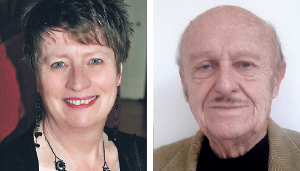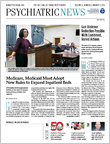Adjustment disorder is an unknown term to most medical professionals. Even among family practitioners, it is poorly recognized and seldom diagnosed, although it should be identified as one of the most common psychiatric disorders. As a result, less than 3 percent of those with mental health problems in primary care are diagnosed with adjustment disorder.
By contrast, it is the most common diagnosis in the military and in liaison psychiatry, even outstripping major depressive disorder (MDD). Various studies have identified a prevalence of about 12 to 15 percent in liaison psychiatry, and it is a common diagnosis in the emergency department among those who self-harm.
One of the reasons for the failure to recognise or diagnose adjustment disorder is that it was an orphaned category, sitting alone in DSM-IV. Now, in DSM-5 it has taken its place in the broad category known as “trauma and stress-related disorders.” This will undoubtedly enhance its utilization and increase the likelihood of its being more often diagnosed and researched.
Adjustment disorder is diagnosed in an individual who experiences a stressful or traumatic event and shows an exaggerated response. The symptoms overlap with those of other conditions such as MDD, generalized anxiety disorder (GAD), and behavioral problems but fail to reach the threshold for these major syndromes. Nevertheless, the symptoms of adjustment disorder are regarded as clinically significant and do not represent an adaptive response to a stressor. There may also be impairment in day-to-day functioning. The diagnosis cannot be made unless there is a trigger—unlike MDD, which can occur without any precipitant although it is frequently preceded by a stressful life event. Adjustment disorder resolves over time when the stressor is removed or when the person’s own adaptive skills and resilience enable this. Also, removing an individual from the stress-inducing situation facilitates improvement. Thus, it differs from MDD, which invariably requires some intervention, either pharmacological or psychological, to achieve recovery.
There is no evidence that antidepressants have any effect on mood changes associated with adjustment disorder, but pharmacological treatments may help alleviate sleep and anxiety symptoms. Randomized, controlled trials of pharmacotherapy are uncommon and have mainly been conducted on subjects with the anxiety subtype. Psychological treatments have received more attention, and brief forms are the best tested. These may truncate the symptoms and improve functioning, but such improvement is usually contingent upon the removal of the stressor.
Take the following example: Ms. A. worked in an office. Her relationship with her co-workers was good except for her line manager, whom she felt treated her less fairly than she did other workers. One day, in the presence of co-workers, the manager reprimanded Ms. A. for an error. When she tried to explain that she was not responsible because she was on annual leave on the day the error had occurred, she was ignored. She was upset and went home early. She lay awake at night thinking about the injustice of what had happened; she cried when she thought about her perceived humiliation, and her appetite abated. She returned to work for the rest of the week but found herself too anxious to return thereafter. She sought assistance from a counselor, and her family physician prescribed hypnotics to be taken as required. She never returned to work at that firm and obtained employment elsewhere, and her symptoms subsequently resolved.
This scenario is typical of adjustment disorder (anxiety subtype). The interventions she received were limited, and once her psychosocial situation improved, so did her symptoms. Her reaction was considered in excess of what would be considered “normal.” Ultimately, with little structured intervention, she returned with good functioning to new employment.
When a person has some but not all the features of a recognized psychiatric disorder and an adjustment disorder is suspected, a differential diagnosis must be that of MDD or GAD in evolution. A watch-and-wait approach is best. At times it will be impossible to decide whether the person has an adjustment disorder or some other diagnosis, especially if the stressor is protracted, as is often the case with family or social problems. At times a trial of antidepressants may be warranted but with the caveat that failure to respond may indicate a reaction directly caused by stressful events (adjustment disorder) rather than a triggered episode of MDD.
If the diagnosis is adjustment disorder, then the person can be reassured that his or her psychological prognosis is very good. The evolution from viewing adjustment disorder as a “wastebasket” diagnosis to its being understood as an important primary disorder will enhance the utility of and respect for this important diagnosis in psychiatry. ■

